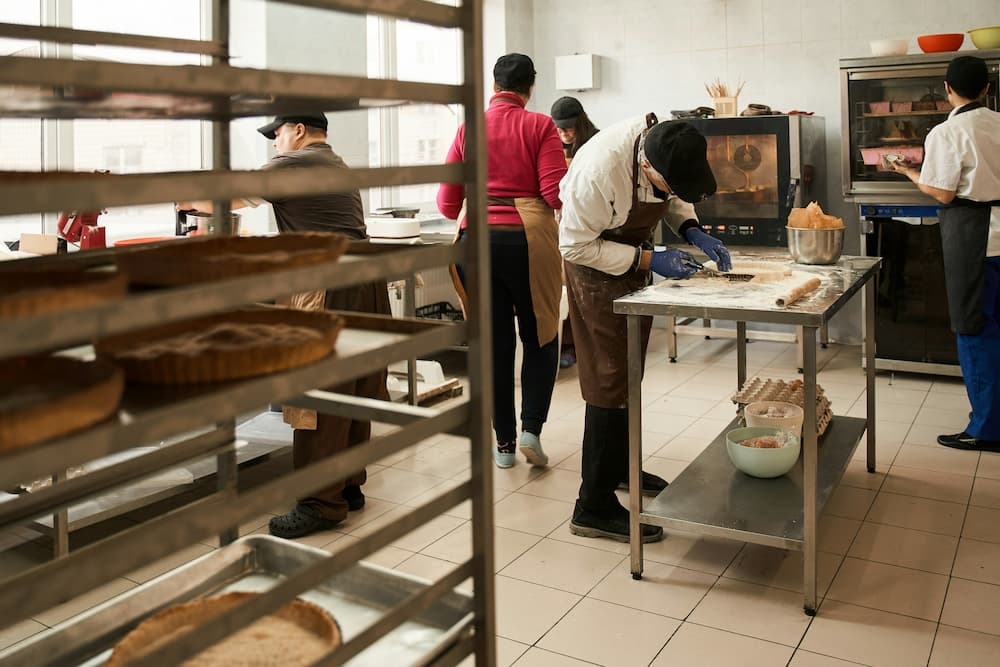Engaging local diners: A guide to restaurant geomarketing
Table of Contents
CloudKitchens
How many tacos can be delivered from a 1000sqft restaurant?
The same amount as a 200sqft ghost kitchen.
In today’s fast-paced world, attracting local customers is critical to a restaurant’s success. Geomarketing, the practice of using location-based data to tailor marketing strategies, is a game-changer for restaurant owners. It enables you to connect with nearby customers, drive foot traffic, and enhance sales.
Whether you’re running a dine-in restaurant, a ghost kitchen, or a hybrid model, geomarketing can help you stand out in a crowded market. Let’s explore how you can leverage this powerful tool to grow your business.
What is geomarketing?
Geomarketing refers to the use of geographic data to create targeted marketing campaigns. By understanding where your potential customers are located, you can tailor your promotions, advertisements, and offers to resonate with the right audience at the right time.
For restaurants, geomarketing can be as simple as running location-based ads or as sophisticated as using geofencing technology to trigger promotions when potential customers enter a specific area. This localized approach ensures your marketing efforts are more effective and relevant.
Read more: Revitalizing Your Local Community With Ghost Kitchens
Benefits of geomarketing for restaurants
- Increased local visibility: Geomarketing puts your restaurant in front of people who are geographically close and more likely to visit or order. This is particularly valuable for attracting walk-ins and delivery customers.
- Targeted campaigns: Instead of spending money on broad advertising, geomarketing allows you to focus on potential customers within a specific radius. Tailored promotions can drive higher engagement and conversion rates.
- Boost sales during peak hours: Use geomarketing to drive traffic during slow hours or boost orders during peak times. For example, sending out a push notification for a lunch deal to office workers nearby can increase mid-day sales.
- Enhanced customer engagement: By personalizing your approach based on location, you can create marketing campaigns that resonate with your audience, leading to better customer relationships and loyalty.
Key strategies for implementing geomarketing
1. Leverage geofencing technology
Geofencing creates virtual boundaries around your restaurant or specific high-traffic areas, such as malls or office complexes. When potential customers enter this zone, they receive targeted ads, push notifications, or exclusive offers. For example, you can send a 10% discount code to people walking near your location during dinner hours.
2. Run location-based ads
Platforms like Google Ads and Facebook Ads allow you to target users based on their location. This ensures your ads are seen by people in the vicinity of your restaurant. For example, if you’re launching a new dish, you can target ads to locals who are within a 5-mile radius.
3. Optimize for Local SEO
Your online presence plays a huge role in geomarketing success. Here’s how to boost local SEO:
- Claim and optimize your Google My Business profile with accurate information, photos, and customer reviews.
- Use location-specific keywords in your website content and meta descriptions, such as “best pizza in [City Name].”
- Encourage customers to leave reviews, as they can significantly impact local search rankings.
4. Analyze customer data
Use data analytics tools to study customer behavior and trends. Identify high-potential areas where your target audience spends time and tailor your marketing strategies to capture their attention.
5. Create hyper-local offers
Exclusive deals for local customers can boost loyalty and engagement. For instance, offer discounts for nearby office workers during lunch hours or special packages for families in your neighborhood.
Read more: How to successfully promote your restaurant and build a loyal customer base with 12 tips!
Challenges and how to overcome them
Privacy concerns
One of the primary challenges with geomarketing is navigating privacy issues. Customers may feel uneasy about sharing their location data, especially if they are unaware of how it is used. This mistrust can lead to hesitancy in engaging with location-based offers or ads.
- Transparency: Clearly communicate how customer data is collected, stored, and used. For instance, state that location data is used solely for improving their experience and tailoring promotions.
- Compliance: Adhere to regulations like GDPR (General Data Protection Regulation) in Europe or CCPA (California Consumer Privacy Act) in the U.S. These laws require businesses to obtain consent before collecting location data and provide customers with the option to opt-out.
- Anonymization: Use aggregated or anonymized data to protect individual privacy while still gaining insights into customer behavior.
Cost of tools
Geomarketing technologies, such as geofencing platforms, location-based advertising tools, and analytics software, can sometimes be costly, particularly for smaller restaurant operators.
- Invest wisely: Start with free or affordable tools like Google My Business for location-based visibility and basic analytics. Platforms like Facebook Ads also allow for cost-effective geo-targeted campaigns.
- Leverage CloudKitchens solutions: Use platforms designed for efficiency and scalability in your kitchen, like CloudKitchens, to reduce costs while you can focus on maximizing marketing reach.
- Prioritize ROI: Focus on tools that offer clear value and measurable outcomes, such as platforms that integrate seamlessly with your delivery systems and marketing dashboards.
Measuring ROI
Tracking the effectiveness of geomarketing efforts can be challenging. If ROI isn’t clearly visible, it becomes harder to justify continued investment in these strategies.
- Set clear metrics: Define what success looks like before launching campaigns. Metrics might include foot traffic, online orders, or social media engagement.
- Utilize analytics tools: Use platforms that provide real-time reporting on customer interactions, ad performance, and conversions. Tools like Google Analytics or geomarketing-specific solutions can track data effectively.
- Run A/B tests: Experiment with different campaign formats to determine which ones yield the best results. For example, test the effectiveness of push notifications versus social media ads in driving sales.
Read more: Restaurant marketing: The ultimate guide
The future of geomarketing in restaurants
As technology advances, geomarketing is poised to become even more impactful, offering new ways to connect with customers and improve restaurant marketing strategies.
Augmented reality (AR)
AR technology can take geomarketing to the next level by creating immersive customer experiences. For example, restaurants could use AR to show virtual menus or highlight promotions when customers point their smartphones at the restaurant’s location on a map.
Real-time data tracking
With advancements in real-time tracking, restaurants can gain instant insights into customer behavior and respond quickly. For example, a sudden surge in foot traffic near your location could trigger instant promotions to attract more customers.
AI-driven insights
Artificial intelligence will play a critical role in geomarketing by analyzing vast amounts of location-based data and offering actionable insights. AI could predict peak traffic times or suggest optimal marketing strategies based on customer behavior patterns.
Integration with wearables and IoT
Geomarketing strategies may soon integrate with wearable devices like smartwatches or IoT-enabled cars. For example, a smartwatch might notify customers of nearby restaurant deals when they’re out for a walk, or an IoT-enabled GPS system in a car could suggest dining options based on their location.
Hyper-personalization
With better data collection and analysis, geomarketing will enable hyper-personalized campaigns. Customers could receive highly tailored offers based on their preferences, habits, and even the weather in their area.
Key takeaway
Staying ahead in the competitive restaurant landscape will require adopting these emerging technologies. By combining traditional geomarketing strategies with future-forward tools, restaurants can deliver unparalleled customer experiences while boosting profitability.
Read more: Restaurant Technology: Boost your business with the best technology trends
Harness the power of geomarketing with CloudKitchens
Geomarketing offers a powerful way for restaurants to engage with nearby customers, boost foot traffic, and increase revenue. By leveraging tools like geofencing, local SEO, and data analytics, you can create tailored campaigns that resonate with your audience and drive results.
Take your restaurant marketing to the next level with CloudKitchens. Our innovative business and strategies make it easy for you to implement geomarketing and connect with local customers. Get Started Today!
DISCLAIMER: This information is provided for general informational purposes only and the content does not constitute an endorsement. CloudKitchens does not warrant the accuracy or completeness of any information, text, images/graphics, links, or other content contained within the blog content. We recommend that you consult with financial, legal, and business professionals for advice specific to your situation.
More insights & stories
There’s more where that came from.
Get in the know and check out our additional insights


